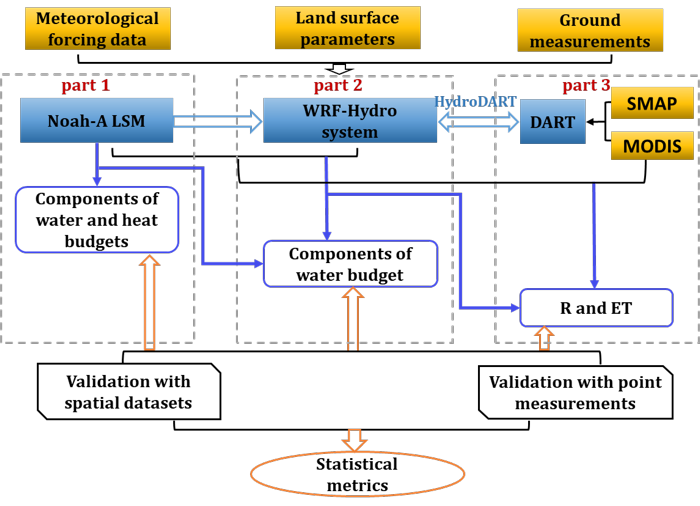| Student: | P. Zhang |
|---|---|
| Timeline: | October 2017 - 6 October 2021 |
Abstract
Exchanges of water and heat at the land atmosphere interface play an important role in weather and climate dynamics for providing the lower boundary contidions. Due to the special geographical position and physical environment of the Tibertan Plateau (TP), the water and heat exchanges on the TP have profound thermal and hydrological impacts on atmospheric circulation. This study aims to provide a better quantification of water and heat exchanges for the TP. The main focus is to incorporate the augmented Noah land surface model (Noah-A LSM) into the sturcture of WRWF-Hydro system, as well as to improve the estimates of soil moisture and snow albedo by assimilating remote sensing data. The study areas include UYRB (Upper Yellow River Basin), USRB (Upper Salwee River Basin) and UBRB (Upper Brahmaputra River Basin), and the work mainly consists of three parts: 1) to evaluate the performance of the Noah-A LSM for capturing the regional scale surface water and heat budget simulations using RS measurements, 2) to investigate the impact of grouondwater and routing schemes for the surface water budget simlations using WRF-Hydro model, 3) to explore the impact of assimilating satellite-based soil moiisture and snow albedo data on simulationg runoff and evapotranspiration using WRF-Hydro model.
The study maily consists of three parts (see Figure 1). The first part is to evaluate the performance of the Noah-A LSM (described in section 2.1.2) for capturing the regional scale surface water and heat budget simulations on three Tibetan river basins using RS measurements (see 4.2 for details). The second part is to investigate the impact of groundwater and routing schemes for the surface water budget simulations using WRF-Hydro model (see 4.3 for details). The third part is to explore the impact of assimilating satellite-based soil moisture and snow albedo measurements on simulating runoff and evapotranspiration using WRF-Hydro system (see 4.4 for details).




